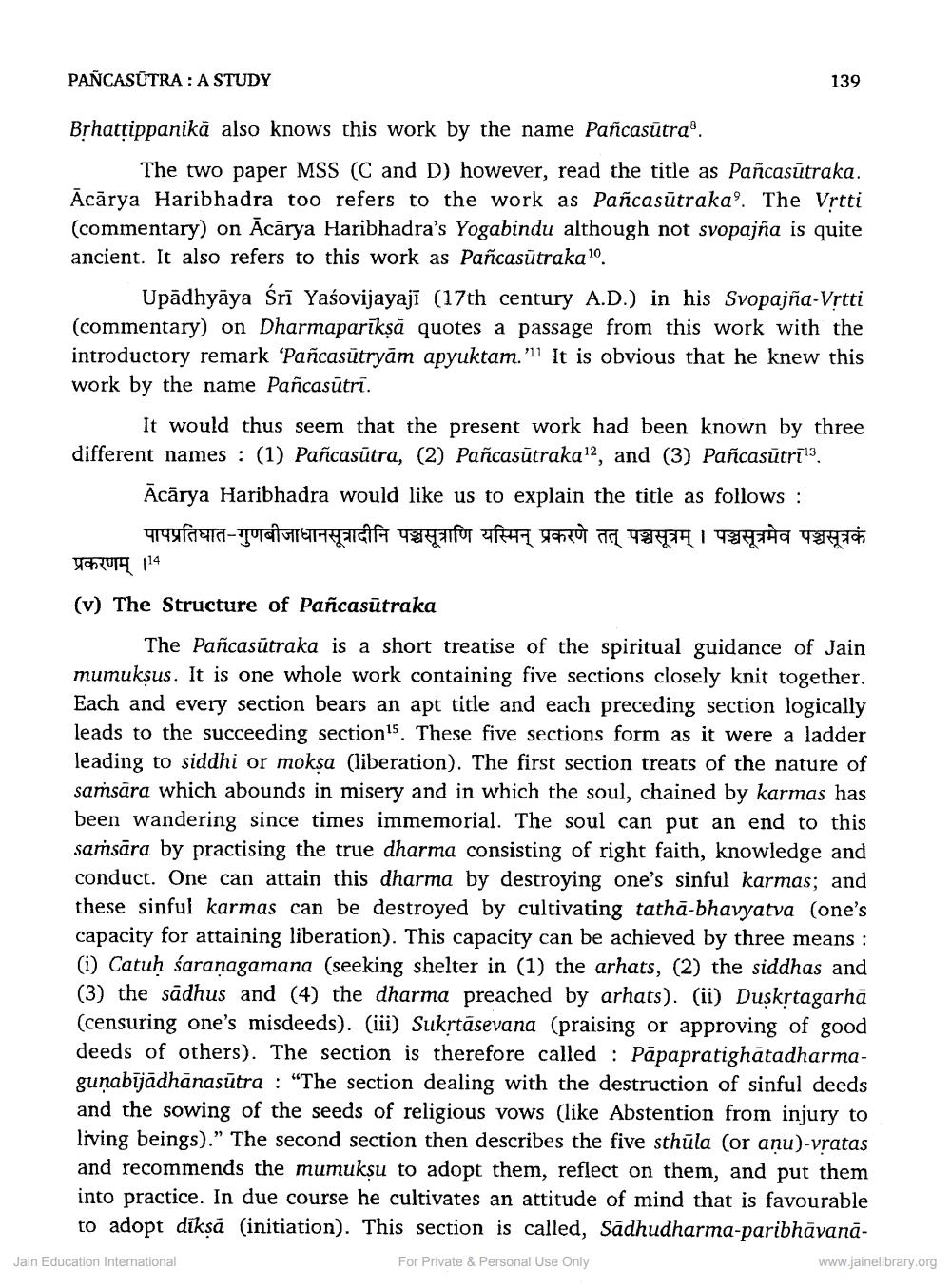________________ PANCASUTRA : A STUDY 139 Brhattippanika also knows this work by the name Pancasutra'. The two paper MSS (C and D) however, read the title as Pancasutraka. Acarya Haribhadra too refers to the work as Pancasutraka'. The Vrtti (commentary) on Acarya Haribhadra's Yogabindu although not svopajna is quite ancient. It also refers to this work as Pancasutraka 10. Upadhyaya Sri Yasovijayaji (17th century A.D.) in his Svopajna-Vrtti (commentary) on Dharmapariksa quotes a passage from this work with the introductory remark 'Pancasutryam apyuktam.'11 It is obvious that he knew this work by the name Pancasutri. It would thus seem that the present work had been known by three different names : (1) Pancasutra, (2) Pancasutraka!?, and (3) Pancasutril3. Acarya Haribhadra would like us to explain the title as follows : पापप्रतिघात-गुणबीजाधानसूत्रादीनि पञ्चसूत्राणि यस्मिन् प्रकरणे तत् पञ्चसूत्रम् / पञ्चसूत्रमेव पञ्चसूत्रकं Wouny 114 (v) The Structure of Pancasutraka The Pancasutraka is a short treatise of the spiritual guidance of Jain mumuksus. It is one whole work containing five sections closely knit together. Each and every section bears an apt title and each preceding section logically leads to the succeeding sections. These five sections form as it were a ladder leading to siddhi or moksa (liberation). The first section treats of the nature of samsara which abounds in misery and in which the soul, chained by karmas has been wandering since times immemorial. The soul can put an end to this samsara by practising the true dharma consisting of right faith, knowledge and conduct. One can attain this dharma by destroying one's sinful karmas; and these sinful karmas can be destroyed by cultivating tatha-bhavyatva (one's capacity for attaining liberation). This capacity can be achieved by three means : (i) Catuh saranagamana (seeking shelter in (1) the arhats, (2) the siddhas and (3) the sadhus and (4) the dharma preached by arhats). (ii) Duskstagarha (censuring one's misdeeds). (iii) Sukstasevana (praising or approving of good deeds of others). The section is therefore called : Papapratighatadharmagunabijadhanasutra : "The section dealing with the destruction of sinful deeds and the sowing of the seeds of religious vows (like Abstention from injury to living beings)." The second section then describes the five sthula (or anu)-vratas and recommends the mumuksu to adopt them, reflect on them, and put them into practice. In due course he cultivates an attitude of mind that is favourable to adopt diksa (initiation). This section is called, Sadhudharma-paribhavanaJain Education International For Private & Personal Use Only www.jainelibrary.org




